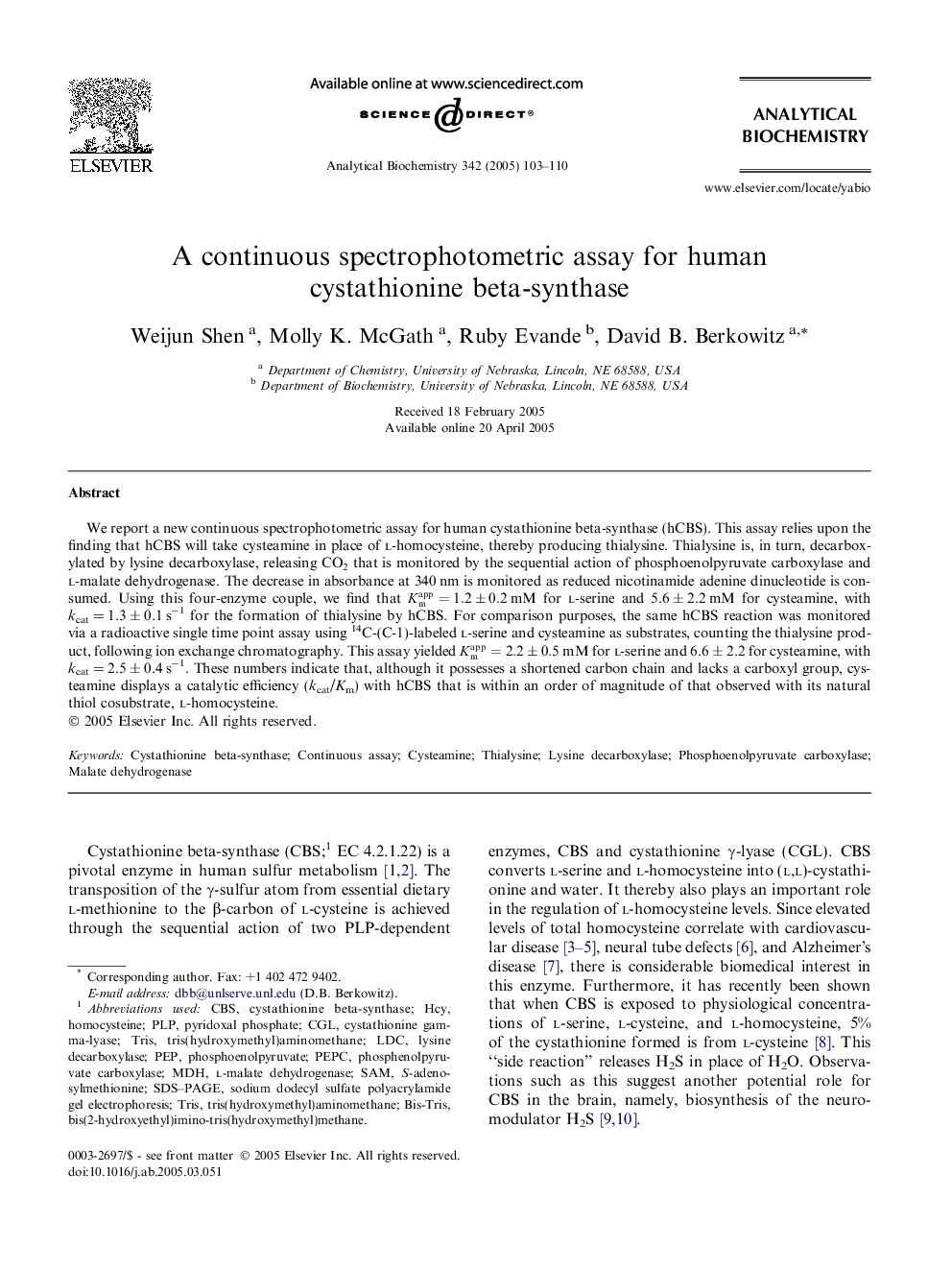| Article ID | Journal | Published Year | Pages | File Type |
|---|---|---|---|---|
| 10533184 | Analytical Biochemistry | 2005 | 8 Pages |
Abstract
We report a new continuous spectrophotometric assay for human cystathionine beta-synthase (hCBS). This assay relies upon the finding that hCBS will take cysteamine in place of l-homocysteine, thereby producing thialysine. Thialysine is, in turn, decarboxylated by lysine decarboxylase, releasing CO2 that is monitored by the sequential action of phosphoenolpyruvate carboxylase and l-malate dehydrogenase. The decrease in absorbance at 340 nm is monitored as reduced nicotinamide adenine dinucleotide is consumed. Using this four-enzyme couple, we find that Kmapp=1.2±0.2mM for l-serine and 5.6 ± 2.2 mM for cysteamine, with kcat = 1.3 ± 0.1 sâ1 for the formation of thialysine by hCBS. For comparison purposes, the same hCBS reaction was monitored via a radioactive single time point assay using 14C-(C-1)-labeled l-serine and cysteamine as substrates, counting the thialysine product, following ion exchange chromatography. This assay yielded Kmapp=2.2±0.5mM for l-serine and 6.6 ± 2.2 for cysteamine, with kcat = 2.5 ± 0.4 sâ1. These numbers indicate that, although it possesses a shortened carbon chain and lacks a carboxyl group, cysteamine displays a catalytic efficiency (kcat/Km) with hCBS that is within an order of magnitude of that observed with its natural thiol cosubstrate, l-homocysteine.
Keywords
Related Topics
Physical Sciences and Engineering
Chemistry
Analytical Chemistry
Authors
Weijun Shen, Molly K. McGath, Ruby Evande, David B. Berkowitz,
